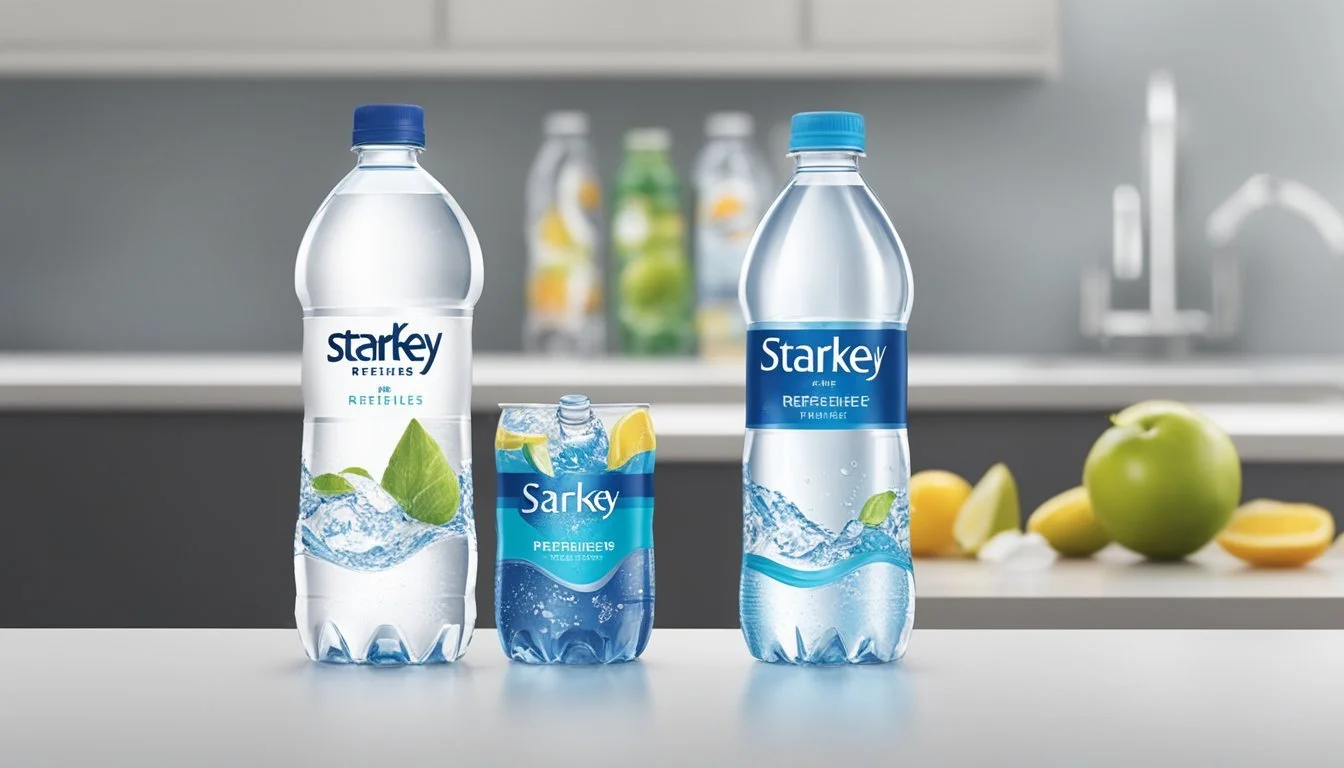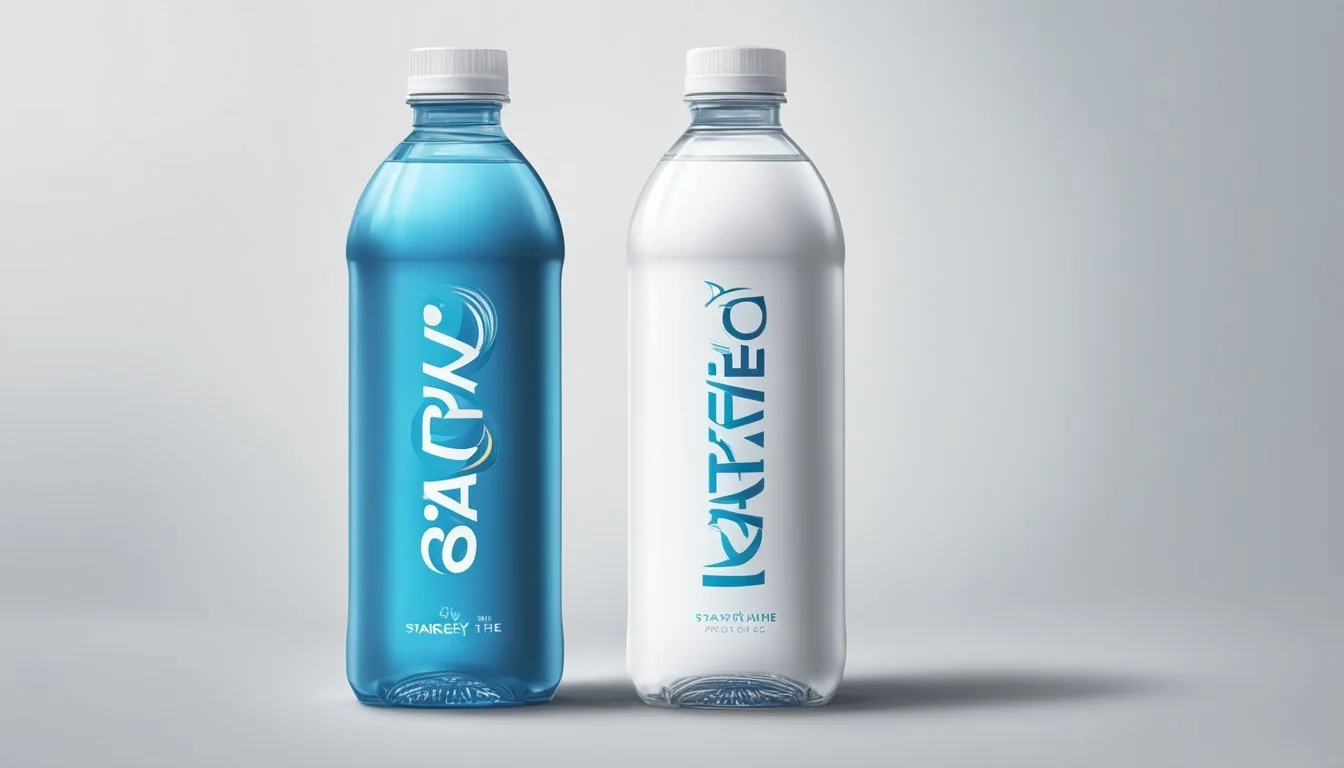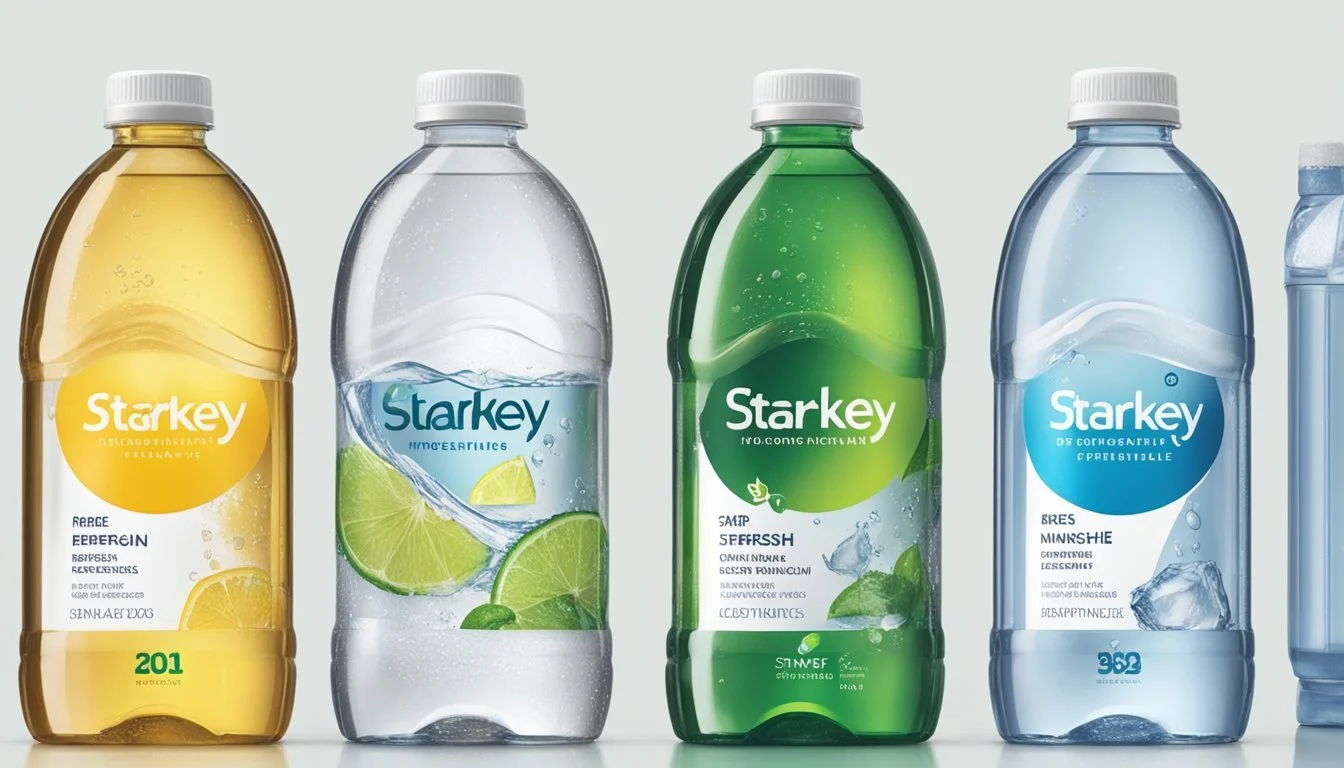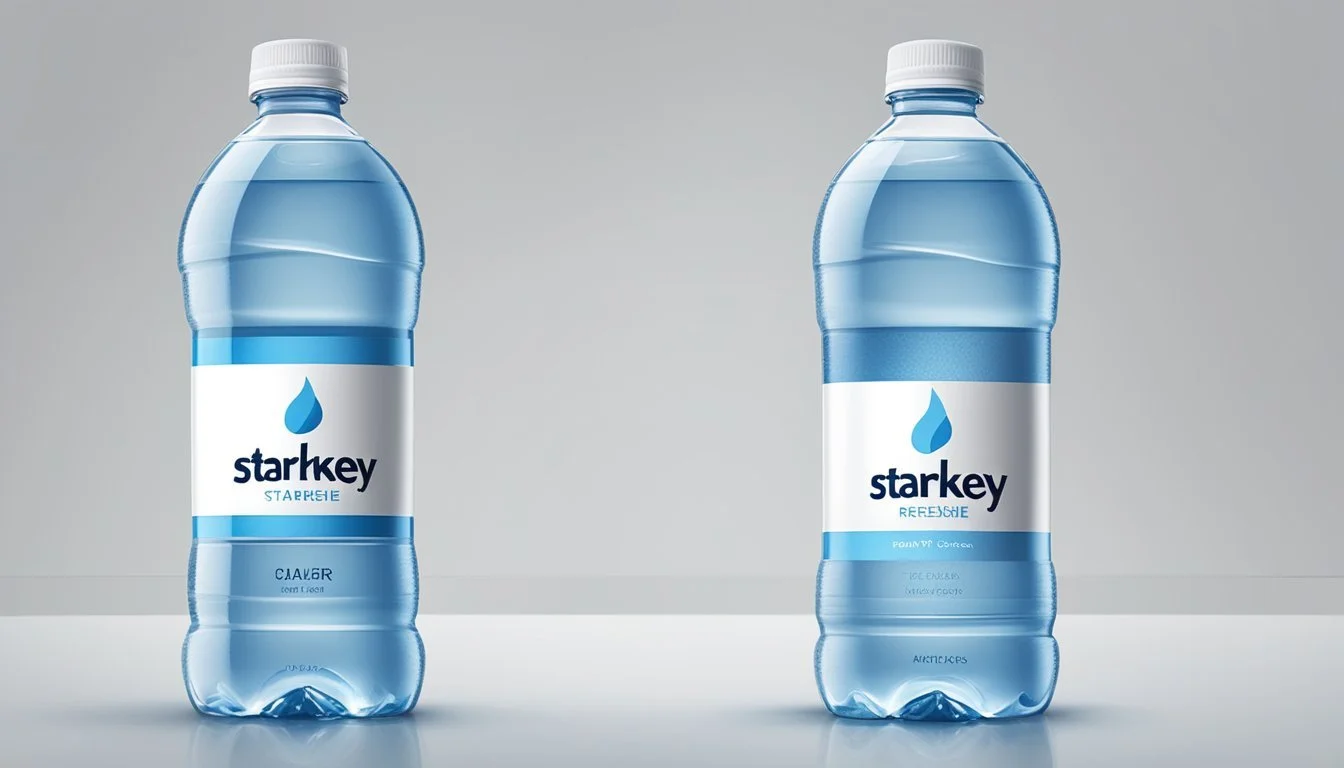Starkey vs. Refreshe
A Comparative Review of Bottled Water Brands
When it comes to bottled water, consumers are often faced with a myriad of choices, making it difficult to determine which brand offers the best taste and quality. Starkey and Refreshe are two popular options that frequently pop up in discussions. Both brands offer unique attributes, but which one stands out as the superior choice?
Starkey water is known for its distinctive, almost savory flavor, offering a thickness that sets it apart from more generic brands. This unique taste profile makes it a favorite for those looking for something different in their hydration experience. Starkey sources its water with care, focusing on delivering a product that promises purity and consistency.
On the other hand, Refreshe water provides a clean, reliable taste that appeals to a wide audience. It is often commended for its straightforward, no-frills approach to hydration. While it may not offer the same bold flavor experience as Starkey, Refreshe's consistency and widespread availability make it a convenient choice for many.
Understanding Bottled Water
Bottled water comes in various forms, each with unique characteristics and regulations. This section provides a detailed overview of its types, regulations, and standards.
Definition and Types of Bottled Water
Bottled water is water packaged in bottles for consumption. It can be categorized based on its source and treatment processes.
Spring water sources from underground formations where water flows naturally to the surface. It retains the same properties as its source.
Mineral water contains naturally occurring minerals and cannot be altered or treated to add these elements.
Purified water undergoes processes like distillation or reverse osmosis to remove impurities.
Alkaline water has a higher pH than regular drinking water, typically above 7. This is achieved through ionization or adding natural minerals.
Regulations and Standards
Bottled water must comply with specific regulations and standards set by authorities like the FDA and EPA. These regulations ensure water quality and safety.
Spring and Mineral water must meet source protection and composition standards. The minerals in mineral water are naturally occurring and cannot be added.
For purified water, stringent purification processes are mandated to remove contaminants.
Labeling, bottling practices, and quality control are aspects regulated to maintain consumer trust.
Maintaining these standards ensures that whether choosing spring, mineral, purified, or alkaline water, consumers receive safe and high-quality products.
Health and Hydration
Starkey and Refreshe bottled waters differ in their health and hydration benefits, stemming from their sources, mineral content, and electrolytes.
Hydration and Health Benefits
Starkey water is sourced from geothermal springs, which can add unique trace minerals and a slight alkalinity. This can contribute to its distinct taste and may appeal to those seeking water with natural mineral content.
Refreshe, on the other hand, offers a budget-friendly option with a neutral pH of 7.4 and no additives. Its clean and straightforward composition makes it a reliable choice for hydration without alterations in flavor. Both waters support hydration, but Starkey's unique sourcing may provide added health benefits for those seeking more than just basic hydration.
Minerals and Electrolyte Content
Starkey boasts higher mineral content due to its geothermal origins. This includes beneficial electrolytes like calcium and magnesium, which aid in various bodily functions such as muscle performance and bone health.
Refreshe contains minimal minerals and electrolytes, giving it a more purified profile. Its simple composition ensures a clean taste, but it may not offer the same electrolyte content as Starkey.
Therefore, individuals looking for enhanced hydration through additional minerals and electrolytes might lean towards Starkey, while those preferring a neutral, additive-free option may choose Refreshe.
Minerals & Electrolytes Starkey Refreshe Calcium Present Minimal Magnesium Present Minimal Sodium Trace Minimal pH Level ~8.4 7.4
This table highlights the differences and can help consumers make informed choices based on their health and hydration needs.
Comparing Popular Brands
Examining the top brands in the bottled water market and their unique features reveals a wide range of offerings, from leading household names to niche options with distinctive qualities.
Market Leaders and Their Offerings
Leading brands such as Aquafina, Evian, and Fiji Water dominate shelves, known for their consistent quality and widespread availability. Aquafina, a PepsiCo product, emphasizes purity, while Evian is sourced from the French Alps, boasting natural minerals. Fiji Water stands out with its artesian origins and high silica content, promoting a smooth texture.
Other prominent names include Dasani, known for its crisp taste achieved through a rigorous purification process, and Voss, which markets itself on its artesian source and sleek bottle design. Smartwater is often favored for its added electrolytes, making it a popular choice among active individuals.
Niche Brands and Distinctive Features
Niche brands like Starkey, Core Hydration, and Icelandic Glacial offer unique selling points that cater to specific preferences. Starkey, with its mineral-rich profile, appeals to those seeking a refreshing and robust taste. Core Hydration targets optimal pH balance and hydration, designed to match the body's natural pH of 7.4.
Icelandic Glacial prides itself on its origin from Iceland's Ölfus Spring, highlighting its naturally low mineral content for a cleaner taste. Essentia is another notable mention, known for its high pH and ionized alkaline water, making it a favorite among health-conscious consumers. These brands offer unique features that set them apart from the broader market leaders, providing varied options for different consumer needs.
Starkey vs. Refreshe: Brand Profiles
Starkey and Refreshe represent two distinct products in their respective markets. This section explores their origins, product details, and sourcing.
Starkey: Brand Insights and Source
Starkey stands out in the hearing aid market with a history of cutting-edge technology and medical-grade products. It is recognized for prioritizing user-centric designs, which cater to various degrees of hearing loss. Their range includes models like Invisible In Canal (IIC) and Behind The Ear (BTE).
Starkey's commitment to innovation is evident through features like Bluetooth connectivity and custom programming. Based in Eden Prairie, Minnesota, Starkey ensures quality and precision in its products, maintaining a reputable position in hearing aid solutions.
Refreshe: Brand Insights and Source
Refreshe Bottled Water is marketed by Better Living Brands LLC and bottled by Niagara Bottling, LLC. The water originates from multiple sources, including natural springs and municipal supplies, exemplified by products like natural spring water from the Ouachita Mountains in Arkansas.
Refreshe emphasizes high standards in water purification and quality control, catering to consumers looking for reliable bottled water. It has earned trust through meticulous sourcing and rigorous testing, ensuring consistent water purity and taste.
Taste and Purity
Starkey and Refreshe bottled water brands are often compared for their taste profiles and purity. This section examines the sensory experience provided by each brand and their adherence to contamination standards.
Taste Profiling and Water Sommeliers
When it comes to taste, Starkey water is sourced from natural springs and known for its crisp, clean flavor. Consumers frequently describe it as refreshing and smooth. Refreshe, on the other hand, has a neutral taste, which appeals to a wide range of palates. Taste profiles can vary greatly, influenced by the source and mineral content.
Water sommeliers often highlight subtle differences in flavors. Starkey's high mineral content can add complexity, making it a favorite in tastings. Refreshe is appreciated for its simplicity and versatility. Consumer preference often hinges on whether they value a distinct taste or a more subtle, unobtrusive water experience.
Purity and Contaminant Levels
Purity is a critical aspect for both brands. Starkey prides itself on minimal processing, ensuring consumers receive natural water with its original mineral content intact. Starkey's water frequently meets or exceeds the EPA standards for purity, providing clean drinking water free from harmful contaminants.
Refreshe undergoes rigorous purification processes. This ensures a high level of cleanliness, though some natural minerals may be removed. Both brands commit to providing safe, purified water, yet their methods and end products differ. Starkey retains more natural elements, while Refreshe guarantees absolute clarity and purity through advanced filtration.
Environmental and Health Considerations
When comparing Starkey and Refreshe bottled water, both environmental impact and health considerations are critical factors. These concerns affect consumer choices and the industry's sustainability.
Bottled vs. Tap Water
The choice between bottled water and tap water involves various health implications. Bottled water from Starkey has faced scrutiny for arsenic content, with levels near 9.5 ppb, which is below the federal limit but above the 3 ppb benchmark set by some health researchers.
Tap water, depending on location, usually undergoes rigorous testing and often contains safe fluoride levels. However, potential contaminants like lead in aging infrastructure can pose risks. Bottled water alternatives claim higher purity yet can fall short in health safety due to less stringent regulation in some areas.
Packaging and Sustainability
Packaging significantly impacts environmental sustainability. Starkey and Refreshe primarily use plastic bottles, contributing to plastic pollution. These bottles often end up in landfills or oceans, causing environmental degradation.
Glass bottles, though more sustainable, are less common due to higher costs and transport challenges. Efforts to reduce BPA (Bisphenol A) in plastic bottling have improved health outcomes by minimizing exposure to potentially harmful chemicals. Sustainable practices include recycling initiatives and using less plastic per bottle, which both companies have started implementing.
Both environmental and health considerations are essential in determining the best bottled water brand. Consumers should weigh these aspects carefully to make an informed choice.
Consumer Perspectives
Consumers have distinct preferences when it comes to bottled water, influenced by factors such as brand reputation, taste, and availability. Both Starkey and Refreshe have unique attributes that affect their popularity and consumer trends, as well as their convenience in grocery stores.
Popularity and Consumer Trends
Starkey and Refreshe both have a solid consumer base but appeal to different demographics for various reasons.
Starkey is a premium brand owned by Whole Foods, offering mineral-rich spring water. This brand attracts health-conscious consumers willing to pay more for natural ingredients and perceived health benefits.
In contrast, Refreshe, a brand by Safeway, provides affordable bottled water options. Positioned as a budget-friendly choice, Refreshe appeals to a broader audience looking for everyday drinking water at a lower cost.
Popularity is often linked to marketing strategies. Starkey's emphasis on high-quality sourcing and minimal processing aligns with trends favoring transparency and environmental responsibility. Refreshe's widespread availability and price point make it accessible to many, especially in large family households.
Availability and Convenience
Starkey and Refreshe have different distribution channels, influencing their availability and convenience for consumers.
Starkey is primarily found in Whole Foods stores and select organic markets. While this ensures the water's target audience can easily find it, it limits accessibility for those who do not shop at these stores. This exclusivity can be a barrier for some consumers.
Refreshe, on the other hand, benefits from broader distribution. As a Nestlé product, Refreshe is available in numerous grocery stores and major retail chains. This wide availability makes it a convenient option for everyday purchases, catering to consumers who prioritize ease of access.
Both brands offer multiple types of water, including still and sparkling variations, catering to diverse consumer preferences. The price and placement of Refreshe tend to cater more to high-volume consumption, whereas Starkey focuses on a niche market valuing quality and source transparency.
Scientific Analysis
For the most accurate assessment of Starkey and Refreshe bottled water, examining their pH levels, alkalinity, and mineral content provides valuable insights. This helps to inform how each water brand affects health and hydration.
PH Levels and Alkalinity
Starkey Water:
Starkey bottled water typically has a pH level around 9.6.
This classifies it as alkaline water, known for its potential benefits in neutralizing acid in the body.
Alkaline water can help with acid reflux and improve overall hydration efficiency, making it a popular choice among those seeking specific health benefits.
Refreshe Water:
Refreshe bottled water has a pH level closer to neutral, typically around 7.0.
While it does not offer the same alkaline properties as Starkey, it is still effective for regular hydration.
Neutral pH water like Refreshe is favored by those who prefer less mineral taste and balanced water chemistry.
A quick comparison:
Brand pH Level Type Starkey 9.6 Alkaline Water Refreshe 7.0 Neutral Water
Mineral Content and Health Implications
Starkey Water:
Contains higher concentrations of essential minerals such as calcium and magnesium.
Calcium is vital for bone health, while magnesium is essential for muscle function and energy production.
The mineral-rich profile of Starkey water can contribute to daily dietary mineral intake.
Refreshe Water:
Contains lower levels of minerals.
While it may lack the high mineral content of Starkey, it is still a good source of hydration.
Some consumers prefer water with lower mineral content for a cleaner taste and fewer potential interactions with dietary supplements.
Important minerals comparison:
Mineral Starkey Refreshe Calcium (mg/L) Higher Lower Magnesium (mg/L) Higher Lower
This breakdown highlights the differing attributes of Starkey and Refreshe bottled water, emphasizing their unique health implications and suitability for various hydration needs.
Final Assessment
Starkey and Refreshe bottled waters cater to distinct market segments, making each suitable for different consumer preferences. Key points to consider include taste, price, and water quality.
The Verdict on Starkey vs. Refreshe
Starkey offers a premium, artesian water sourced from Idaho's geothermal spring. Known for its clean taste and mineral content, Starkey appeals to those willing to invest in quality. The bottle design and higher price reflect its upscale positioning, appealing to customers who prioritize natural sourcing and a refined drinking experience.
Refreshe is a more cost-effective alternative. Distributed by Better Living Brands LLC and bottled by Niagara Bottling, LLC, it provides a convenient, everyday option. The water is purified and often more affordable. Although it may lack the distinct mineral profile of Starkey, it delivers reliable hydration for families and individuals focused on budget.
Bottom Line: For consumers seeking the best water quality and are prepared to spend more, Starkey stands out. On the other hand, Refreshe is the ideal choice for those who need a reliable and economical bottled water. Both brands meet different needs efficiently, making them significant players in the bottled water market.
More About Starkey
Icelandic Glacial vs Starkey: Which Bottled Water is Better?
Mountain Valley Spring Water vs Starkey: Which Bottled Water is Better?
Starkey vs Kirkland Signature: Which Bottled Water is Better?
Starkey vs Richard's Rainwater: Which Bottled Water is Better?
Starkey vs Whole Foods Italian Still Mineral water: Which Bottled Water is Better?









